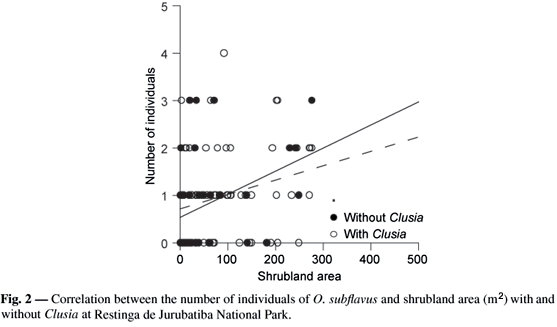The Restinga de Jurubatiba has at least 10 plant formations, including open Clusia shrubland. This formation is composed of dense shrubs of many shapes and sizes, where Clusia hilariana is one of the most important plant species. Shrublands with Clusia (CC) are poorer in plant species and less dense than shrublands without Clusia (SC). Oryzomys subflavus (Rodentia) is the most abundant small mammal species in the open Clusia shrubland. We tested the hypothesis that the abundance of rodents would increase with the size of the patch and would be higher in SC shrublands. Rodents were captured, marked and released in three 780-m-long transects. At each capture site, we evaluated the shape of the shrubland patch, calculated the area and noted the category of the shrubland. Using ANCOVA, we ascertained whether the abundance of Oryzomys subflavus increased with the sampled area and used CC and SC shrublands differently. We also verified if the size of patches used by rodents varies in the same frequency as the size of available shrublands. Rodent abundance was found to increase significantly with the area. There were no differences in the size of the patches used by rodents and the frequency of the size of available patches. This finding indicates that O. subflavus, in the study area, is a generalist species that uses its habitat according to availability.
Clusia hilariana; abundance; structure of shrublands; Restinga; Atlantic Forest



